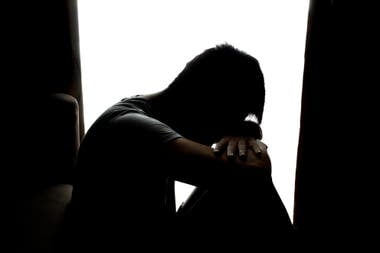
Until a few years ago, the suicide it was treated as a taboo subject. It was even said that it was best not to talk about it. Hence the great effort of the World Health Organization (WHO) to demolish that first great “myth” about suicide and its prevention. “Talking saves lives,” says Nora Fontana, a psychologist specializing in thanatology and suicide, and a member of the Buenos Aires Suicide Assistance Center (CAS).
Raising awareness about this is one of the objectives, every September 10, of the World Suicide Prevention Day, which this year, and for the first time, will illuminate several monuments of the City in yellow, the color that represents this problem.
“Suicide is never a choice, but rather the product of a pressing situation, of a restriction in people’s vital aspirations,” remarks Fontana, who is also the founder of the Group of Specialized Latinos Thanatology and Suicidiology (Glets). She also explains that in relation to suicide there are a number of false beliefs installed in society that it is necessary to eradicate, because they are not harmless but constitute an obstacle when working on prevention.
Here is a list prepared by the CAS with the most common myths:
Myth 1: “He who says he is going to commit suicide does not really do it”
It is one of the most ingrained and totally wrong. In fact, it is estimated that out of every 10 people who commit suicide, nine of them clearly express their intentions and the other somehow hints at their intentions to end their life. “They can do it with words, threats, gestures or changes in behavior. All these signs should be taken into account as red flags,” emphasizes Fontana.
Myth 2: “They don’t want to die, they just want attention”
It is a mistake to assign them wanting to attract attention as if it were a whim. Specialists warn that these are “people whose adaptation mechanisms have failed and find no alternatives, except to attempt against their own life.”
Myth 3: “If he really wanted to kill himself, he would have done it”
The effectiveness of the chosen method does not reflect the wishes to die. It is important to keep in mind that a suicide attempt is always a serious red flag (even if it was executed with apparently harmless means). “Without the appropriate treatment, the choice of another more effective method may only be a matter of time”, warns the CAS specialist.
Myth 4: “He who recovers from a suicidal crisis is not in danger of relapse”
From the CAS they explain that almost half of the people who went through a suicidal crisis and committed suicide, carried it out during the first three months after the emotional crisis, when everyone believed that the danger had passed. The suicidal crisis is the emergence of a process that sometimes unfolds over years. For this reason, Fontana emphasizes the importance of recognizing it for its prevention and providing all the care while it lasts.
Myth 5: “Every person who commits suicide is going through a depression”
Although every depressed person is likely to make a suicide attempt, not all who do suffer from depression.
Myth 6: “Suicide is something that is inherited”
The tendency to suicide is not inherited. What can be inherited is the predisposition to suffer from a certain mental illness in which suicide is a symptom, such as depression, bipolar affective disorder and schizophrenia. “There is also a cultural inheritance if a family member died by suicide, since this can be seen as a ‘permission’. Both things can be treated, prevented and rethought,” Fontana highlights.
Myth 7: “To try to commit suicide you have to be a coward or a brave man”
Experts emphasize that they are not cowards or brave, they are people who suffer and cowardice and courage are personality attributes that are not determined by the attempt to take or respect life.
Myth 8: “It cannot be prevented, it is something that happens on impulse”
Every person before committing a suicide attempt shows a series of symptoms that, if detected early, can help to avoid it. However, Fontana clarifies that “many times they are very difficult to detect.” Among them: isolation, persistence of negative ideas, hopelessness, irritability, withdrawal of feelings, sudden changes in behavior and relationships, anxiety, self-hatred. There may also be suicidal fantasies, sometimes expressed metaphorically as “I want to go on a trip and never come back” and in other cases clearly expressed as a confession of suicidal ideas. Making the decision to commit suicide does not happen overnight. Its about a process.
Myth 9: “Talking about suicide can incite a person at risk”
On the contrary, it reduces the danger and may be the only possibility for the person to channel their emotions and analyze their suicidal intentions. Talking about what is happening to you can help reduce the psychic tension caused by the idea of death and feel helped. “Active listening is essential. By being listened to, the person feels recognized and understood; empathy, putting ourselves in their shoes, from that place we can collaborate,” adds Fontana.
Myth 10: “To approach a person in a suicidal crisis you have to be prepared”
Experts explain that anyone can be a valuable contributor to suicide prevention. Fontana clarifies that it is necessary to avoid judging, criticizing, contradicting, devaluing or minimizing problems or feelings of the person with suicidal ideas. The goal is to help the person “see” or find other solutions, that there are other possible paths.
More info
- Open talk: The Buenos Aires Suicide Assistance Center (CAS) will hold an open talk today for the World Suicide Prevention Day on “Prevention with Presence and Actions”, at 7 pm, on Facebook Live: @casbuenosaires
- #DepressionSinEstigma:Ineco Foundation joins the global movement ‘Yellow September’ and launched an awareness campaign on social networks with the aim of giving more visibility to mental disorders and suicide prevention. It seeks to call on the population to recognize depression symptoms in time.
Where to ask for help
- Line 135. The Suicide Attention Center (CAS) is open 18 hours a day, from 8 am to 2 am, anonymously, free of charge and voluntarily. The technique used is “active listening”, with interventions aimed at the “consultant” speaking. Line 135 is free from CABA or Greater Buenos Aires; and the (011) 5275-1135 is for the whole country.
- National Hospital in Network Specialized in Mental Health and Addictions “Lic. Laura Bonaparte”. It has an Emergency Committee that conducts telephone interviews for the advice and containment of people who suffer the effects of social, preventive and compulsory isolation. Served by mental health professions, the telephone line (011) 4305-0091 to 96, extension 1155, is available from 8 to 20.
- Mental Health CABA Responds. It is a device that provides confidential telephone guidance for residents of the city of Buenos Aires. Tels: 4863-8888 / 48615586 / 4123-3120, Monday to Friday from 8 a.m. to 8 p.m. 4123-3100 int. 3484/3485 holidays, weekends and nights, from 20 to 8.
- SOS an Anonymous Friend. This non-profit association that for almost five decades has offered anonymous and confidential telephone assistance for people who are experiencing an emotional crisis, in the context of a pandemic, is receiving calls by Skype (user: SOSUNAMIGOANONIMO). There are 30 volunteers who allow SOS to work every day from 10 am to 7 pm. It is called and they attend directly.
.
Publicado en el diario La Nación




